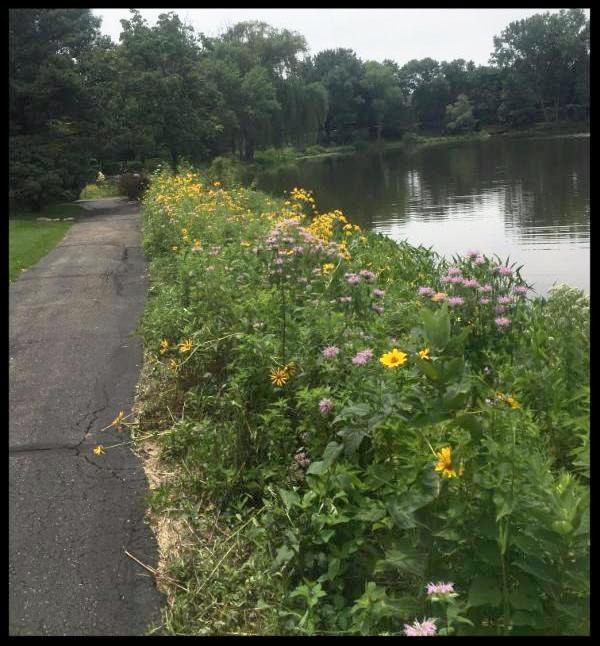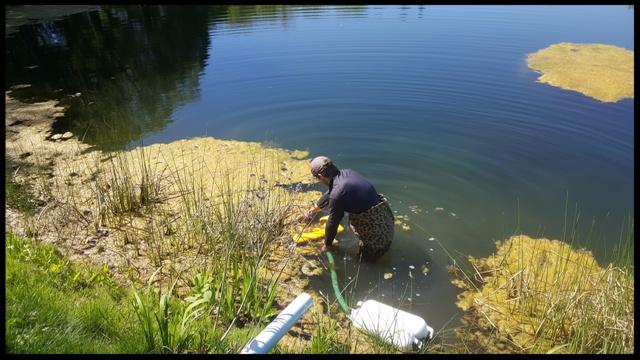Help! My Pond is Turning Green!
Ponds are simply incredible aquatic ecosystems. They are amazing water features that often highlight residential communities and homeowner's properties. Ponds increase biological diversity. They support a wide variety of aquatic plants and attract a plethora of birds, beneficial insect species, frogs, turtles, and even fish. Because of their ecological benefits and their beauty, ponds increase property values.

Especially during the dog
days of summer, we often run into people that are concerned about their local ponds turning green. What is that green film or scum on the water surface? It looks pretty horrible! What causes this? Can we do anything about it? Are there environmentally friendly approaches?
The two most common types of plant growth on ponds that we see are either filamentous algae or duckweed. These plants take nutrients directly from the water and enjoy warm
temperatures and a lot of sun. This is why they really take off and flourish this time of year.
Often times, excess nutrients, especially

phosphorus, can fuel blooms of filamentous algae and duckweed in pond systems. Nutrient sources and dynamics in ponds and their watersheds can get pretty complicated. However, there are simple steps that you can take that will help to reduce nutrient inputs. Infiltrating rain water before it runs off into your pond will reduce nutrient inputs. Consider reducing the amount of fertilizer that you use on your landscape. A portion of this fertilizer will find its way into your pond. Creating a natural buffer around the pond will help to trap and filter water runoff, which will reduce nutrient inputs. Natural buffers are also excellent habitat for wildlife and pollinators, and look amazing.

OK so what can you do now to reduce the existing algae and duckweed currently in your pond? Well, the traditional approach has been to use herbicides to kill the algae and duckweed. This is certainly effective, but it can be thought of as a quick fix, and doesn't really help in improving the pond ecosystem. The nutrients in the dying plant material gets recycled back into the pond ecosystem.
Harvesting the algae and duckweed is environmentally friendly and actually pulls nutrients out of the pond system. If the pond is small enough and the majority of the surface water can be reached from shore, an algae/weed rake can be a very useful tool in manually removing the plants. This strategy will usually require multiple harvesting efforts in order to be successful. At Natural Shore, we have been experimenting with a floating skimmer setup that collects and pumps the surface layer of duckweed off of ponds. This can be used in larger pond systems where rakes are just not feasible. Both of these approaches eliminates the need for chemicals and has a long-term benefit of pulling nutrients out of pond ecosystems.

In combination, natural buffers, judicious use of fertilizers, and plant harvesting can work to reduce nutrients in pond systems. Ponds are exceptional aquatic ecosystems and should be managed with care. We are here to help. If you are interested in creating a pond buffer composed of a diversity of native plants, please call our design experts at 612-703-7581.

|